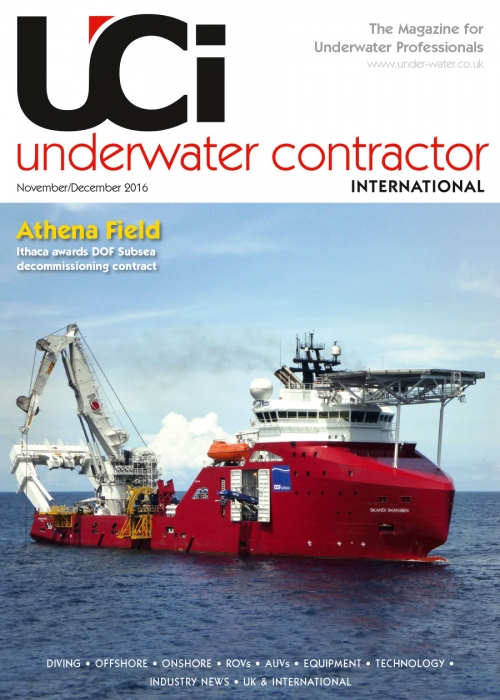
The Magazine for Underwater Professionals
![]() Mar/Apr 2015
Mar/Apr 2015
PRODUCT EYEBALL
Miko addresses oil spill threat from sunken ships
New Moskito tool allows speedy oil recovery from shipwrecks
A tool for removing oil trapped in submerged vessels has been developed in Norway by design specialist Miko Marine. With the launch of the Moskito, the company has addressed the pollution threat that exists with the large numbers of sunken ships around the world that still contain significant quantities of oil in their tanks as cargo or bunker fuel.
Many of the thousands of ships sunk during the Second World War now have 70 years of corrosion eating at their plates and the days are drawing inexorably closer when the pollutants that they contain will escape. The only answers are to either seal the wreck at great expense or to recover the pollutant in a controlled manner. Now, with the introduction of the Moskito, removing the oil is a speedy and cost-effective operation.
DEPLOYED
The Moskito makes this possible through being able to be deployed by divers or by an ROV to any ocean depth. Once in position outside the tank the Moskito’s three powerful magnetic feet are planted against the steel hull and a technician on the surface then activates a 75-millimetre (three-inch) diameter electrically powered tank cutter drill. With its operation controlled through a dual video link, the Moskito’s drill pierces the steel tank walls which may be up to 40 millimetres (1.5 inches) thick. The cut disc then falls away inside and is immediately followed into the tank by a patented spring latch coupling that automatically connects and locks a hose to the tank without allowing any of its contents to escape. With the hose securely in position a subsea pump can be activated to extract the oil at the rate of up to 12 cubic metres per hour and send it to the surface for safe and non-polluting recovery. If it becomes necessary to relocate the Moskito it can be easily repositioned without being returned to the surface. Being such a compact device, it is also easy to use multiple units close together if a higher rate of extraction is required.
SUPPORT
The Moskito arose from a research and development project launched by Miko Marine in 2012. It quickly attracted the interest of the Norwegian Coastal Administration (NCA) which had been grappling with the same pollution problem being caused by spontaneous leaks from sunken wrecks around Norway’s coastline. Having no answer to the problem the NCA decided to support Miko Marine’s quest to find a solution and the two organisations joined forces with the backing of Innovation Norway, a government-sponsored research and development organisation.
It was through a combination of engineering skill and original thought that Miko was able to create the Moskito oil removal system. The name of the tool was the inevitable consequence of its working similarity to the unpopular insect. Just like the insect, it has to be light, versatile and adaptable because when a ship settles on the seabed there is no knowing how its tanks will come to rest. However, with a visual inspection and by studying the plans of the vessel a means of attack can be found. The Moskito is then delivered to the outside of the tank where it penetrates its skin and inserts its proboscis so that the liquid inside can sucked out. The insect allusion falls short of the engineering reality but the principle is the same and measuring just 65 centimetres (25 inches) by 45 centimetres (17 inches) and weighing only 80 kilograms, by subsea engineering standards the tool has an insect’s light touch.
Nicolai Michelsen, general manager of Miko Marine, says: “This was not an easy product to develop as it required us to call upon our highest standards of engineering and design. We are, however, very pleased with the end result which has a practical versatility that will make a valuable contribution to marine environmental conservation. It provides a solution to a problem that has remained unanswered since the first ship sank and we are now hoping that our coastlines and our wildlife will see the benefit.”


